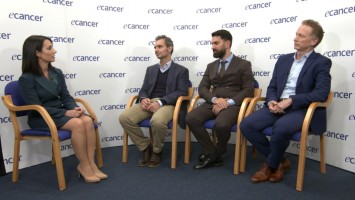The topic of our research was to project cancer incidence rates and burden from using data collected between 2000 and 2012 out to 2030. The background behind doing this research was because with the increased use of antiretroviral therapy individuals living with HIV in the United States are living longer and they are aging into groups where cancer risk of cancers that normally affect the general population is higher. So in order to estimate or predict an informed planning for future cancer prevention and treatment programmes we felt that it was important to estimate the burden of cancer within the US HIV positive population.
What data were you looking at in your research?
The data that we used is from the NCI’s HIV/AIDS and Cancer Match Study which is essentially a linkage study of cancer registries from across the US and HIV positive registries as well. So the data has been linked; the data that we used in this analysis goes to 2000 and continues until 2012. It’s a robust data source and the data that we used to project or predict HIV prevalence comes from the CDC so they’re both nationally representative sources of data.
What were your findings?
We found that the proportion of HIV positive individuals who will be 65 and above will shift from about 4% to 21% by the time we reach the year 2030. Also we found in general that the age standardised incidence rates of most cancers will either decrease or remain constant in trend based on trends from 2000-2012. The only cancer that will increase in terms of age specific incidence rates was found to be prostate cancer. We also found that the burden of cancer within this population will shift from the traditionally AIDS-defining cancers to more of the non-AIDS defining cancers which affect the general population.
The main point, or the main finding, is that in 2030 we predict that the most common cancers will be prostate cancer, liver cancer, lung cancer and NHL. So that was our main finding. AIDS-defining cancers are those that are defined by the CDC as if an individual with HIV is found to be diagnosed with these cancers they are known to have what’s called AIDS which is a late-stage of HIV; those are Kaposi’s sarcoma , NHL and cervical cancer. Non-AIDS defining cancers are eight cancers that we looked into and they include anal cancer, liver cancer, lung cancer, prostate cancer, breast cancer and colon cancer and also some forms of Hodgkin’s lymphoma.
How can we use this information?
It’s important for us to be able to plan for future preventative programmes for this specific subpopulation within the United States. It’s important for us to be able to plan for future smoking cessation programmes, cancer screening programmes and also programmes that will improve the incidence of hepatitis B and C screening within this population because that is an important factor that contributes to this increasing burden of cancer.
Were there any limitations to this study?
Yes, one of the important limitations to take into consideration is that we’re assuming that the trend that we’re seeing from 2000 to 2012 will be consistent or will stay the same out to 2030. So we’re not accounting for any potential changes in cancer incidence or HIV prevalence within the population. Also we’re also assuming that every person who has HIV or has been diagnosed with HIV is within our registry so we are missing people who are not necessarily within the healthcare system but do have HIV. So potentially the burden of cancer can actually be higher.
Will you be looking at this data again in future?
Next summer I’m going back to NCI to look at cancer cases averted using the same data source and I’m excited to see what that analysis will also look like.








